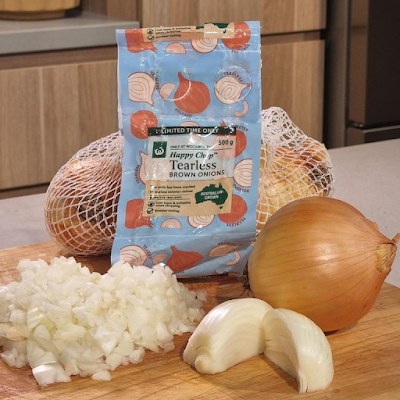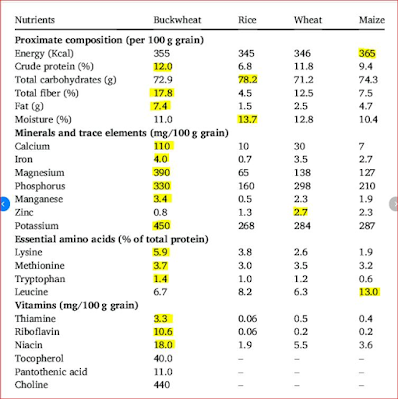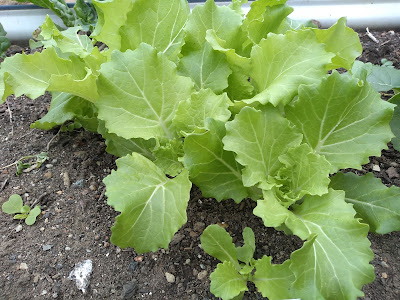I don't think I eat enough protein. My body craves more protein. Protein is expensive. You also need to ensure all the essential amino acids are present, either in that food or a combination of foods you eat, otherwise your body can't utilise the protein you eat.
I looked into protein shakes to increase my protein intake. They taste nice and they take less effort and time than cooking food, but they can be expensive. The best whey protein (high quality, high protein, at a lower price) I can find provides 32 grams of protein per serving. I wonder how that compares to meat, eggs, or even vegetables and grains.
Below I have compared the protein powder to several meats, eggs, vegetables, and grains. For reference, I included the websites where I found the details. This post was mostly made as a way for me to keep these numbers handy.
 |
| Picture from https://customequinenutrition.com/blogs/nutrients/intro-to-protein-amino-acids |
To give the comparisons some perspective, the recommended daily intake for a male about my size and age is roughly:
Protein 50 g
Leucine 2.4 g
Iron 8 mg
Energy 2,000 kcal
To make the comparison as useful as possible, I am comparing 100 grams of each food, except for the protein powder which is one 40g serving.
Protein Powder
Protein Powder per 40 g serve
https://www.uprotein.com.au/100-whey-protein-powder-enzymes-2kgs/
Protein 32.6 g
Leucine 3.39 g
Iron 0.74 mg
Energy 149 kcal
Meat
Note: meat based proteins are considered to be complete proteins as they contain good amounts of all essential amino acids
Note: about 14% to 18% of iron is usually bioavailable from meat
Chicken per 100 g
https://fdc.nal.usda.gov/fdc-app.html#/food-details/171477/nutrients
Protein 27.3 g
Leucine 2.33 g
Iron 1.04 mg
Energy 165 kcal
Beef per 100 g
https://fdc.nal.usda.gov/fdc-app.html#/food-details/174032/nutrients
Protein 25.9 g - some cuts as low as 13.6 g
Leucine 1.45 g
Iron 2.6 mg
Energy 250 kcal
Rabbit per 100 g
https://fdc.nal.usda.gov/fdc-app.html#/food-details/174348/nutrients
Protein 33 g
Leucine 2.57 g
Iron 4.85 mg
Energy 173 kcal
Quail per 100 g
https://fdc.nal.usda.gov/fdc-app.html#/food-details/169902/nutrients
Protein 25.1 g
Leucine unknown
Iron 4.43 mg
Energy 227 kcal
Squab per 100g
https://fdc.nal.usda.gov/fdc-app.html#/food-details/169905/nutrients
Protein 23.9 g
Leucine unknown
Iron 5.91 mg
Energy 213 kcal
Eggs
(note: eggs are high in all of the essential amino acids and are considered to be a complete protein)
Chicken egg boiled per 100g
https://fdc.nal.usda.gov/fdc-app.html#/food-details/173424/nutrients
Protein 12.6 g
Leucine 1.08 g
Iron 1.19 mg
Energy 155 kcal
Quail egg per 100 g
https://fdc.nal.usda.gov/fdc-app.html#/food-details/172191/nutrients
Protein 13 g
Leucine 1.15 g
Iron 3.65 mg
Energy 158 kcal
Vegetables and Grains
Note: many plant based proteins are considered to be incomplete proteins as they are low in one or more essential amino acids
Note: Plant based iron is not as bioavailable as animal based iron, for example less than 2% of the iron in spinach is bioavailable
Spinach per 100g
https://fdc.nal.usda.gov/fdc-app.html#/food-details/168462/nutrients
Protein 2.86 g (not a complete protein)
Leucine 0.223 g
Iron 2.71 mg
Energy 23 kcal
Grape leaf per 100g
https://fdc.nal.usda.gov/fdc-app.html#/food-details/168575/nutrients
Protein 5.6g (not a complete protein)
Leucine unknown
Iron 2.63 mg
Energy 93 kcal
Dandelion leaf per 100g
https://fdc.nal.usda.gov/fdc-app.html#/food-details/169226/nutrients
Protein 2.7 g (not sure if it is complete or not)
Leucine unknown
Iron 3.1 mg
Energy 45 kcal
Watercress per 100g
https://fdc.nal.usda.gov/fdc-app.html#/food-details/170068/nutrients
Protein 2.3 g (not complete protein)
Leucine 0.166 g
Iron 0.2 mg
Energy 11 kcal
Soy bean (sprouted and steamed) per 100g
https://fdc.nal.usda.gov/fdc-app.html#/food-details/168460/nutrients
Protein 8.47 g
Leucine 0.607 g
Iron 1.31 mg
Energy 81 kcal
Peas per 100g
https://fdc.nal.usda.gov/fdc-app.html#/food-details/170419/nutrients
Protein 5.42 g (not a complete protein)
Leucine 0.323 g
Iron 1.47 mg
Energy 81 kcal
Lima beans per 100 g
https://fdc.nal.usda.gov/fdc-app.html#/food-details/174253/nutrients
Protein 7.8 g (not a complete protein)
Leucine 0.673 g
Iron 2.39 mg
Energy 115 kcal
Corn per 100 g
https://fdc.nal.usda.gov/fdc-app.html#/food-details/169998/nutrients
Protein 3.27 g (not a complete protein)
Leucine 0.348 g
Iron 0.52 mg
Energy 86 kcal
Buckwheat per 100g
https://fdc.nal.usda.gov/fdc-app.html#/food-details/170286/nutrients
Protein 13.2 g
Leucine 0.832 g
Iron 2.2 mg
Energy 343 kcal
Rice per 100g
https://fdc.nal.usda.gov/fdc-app.html#/food-details/168930/nutrients
Protein 2.38 g (not a complete protein)
Leucine 0.197 g
Iron 0.2 g
Energy 130 kcal
Wheat per 100g
https://fdc.nal.usda.gov/fdc-app.html#/food-details/168944/nutrients
Protein 9.61 g (not a complete protein)
Leucine unknown
Iron 3.71 mg
Energy 332 kcal
Results
In the above comparison, out of all the meats rabbit meat has the highest percentage of protein. Rabbit meat contained the highest amount of leucine among the foods compared. As far as iron content goes, squab is the stand out, followed by rabbit. Rabbit meat is also low in fat.
Unfortunately rabbit meat is very expensive here, and very difficult to find, so I would either have to breed rabbits or choose another meat. In that case I would choose chicken. Chicken is a cheaper meat, it is readily available, it is high in protein, and it is high in leucine.
Buckwheat is incredibly nutritious for a plant based food. Buckwheat is high in protein, it's one of the few plant based foods that is considered to be a complete protein, it's high in iron, and it's gluten free. Nutritionally, buckwheat is pretty comparable to egg. The protein in buckwheat is absorbed better than the protein in egg, which is almost unbelievable for a plant based food. Sadly, in Australia buckwheat is not commonly eaten and is difficult to find. Presumably this is largely based on political reasons as it is a very healthy food.































